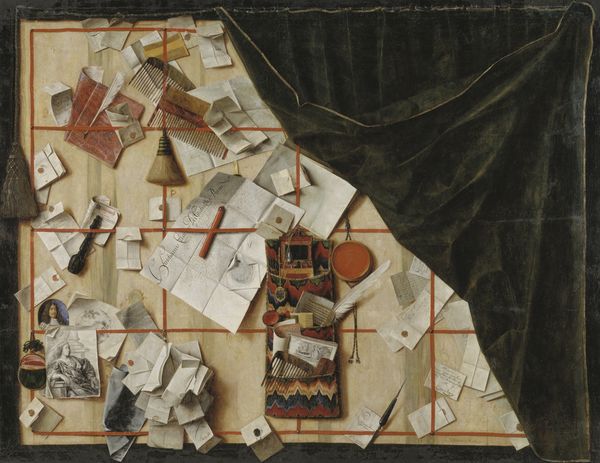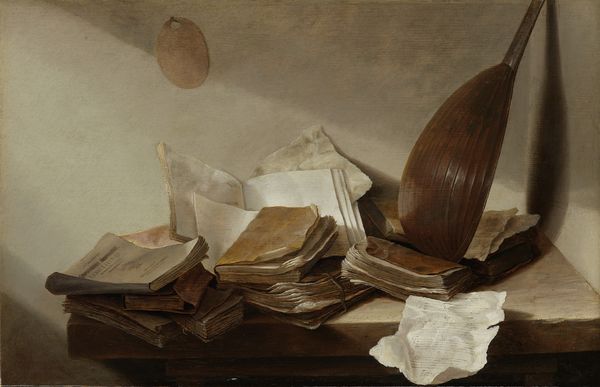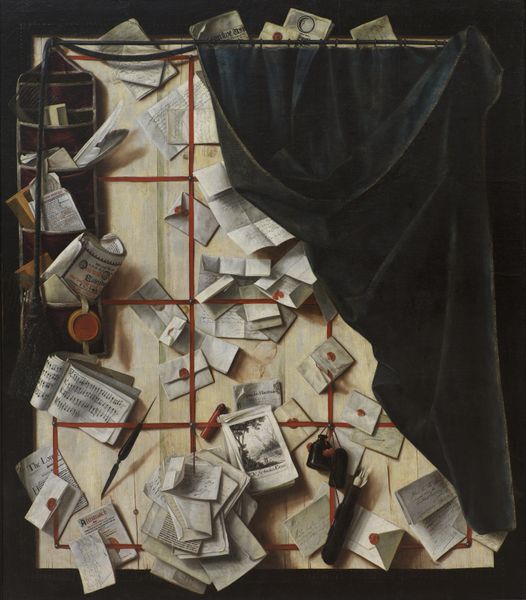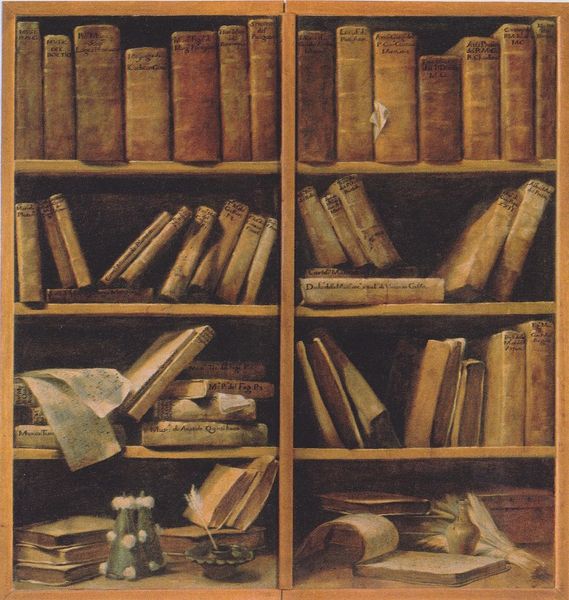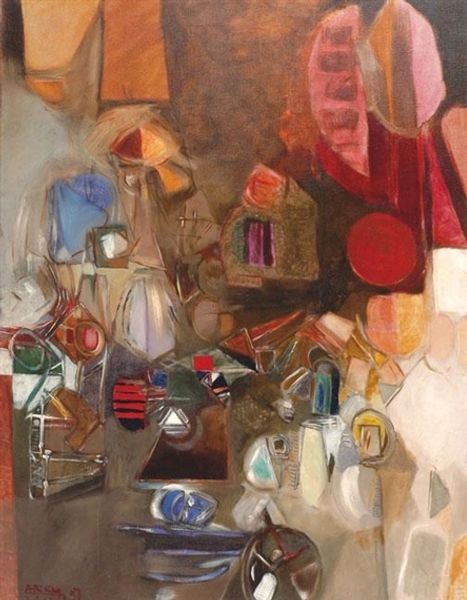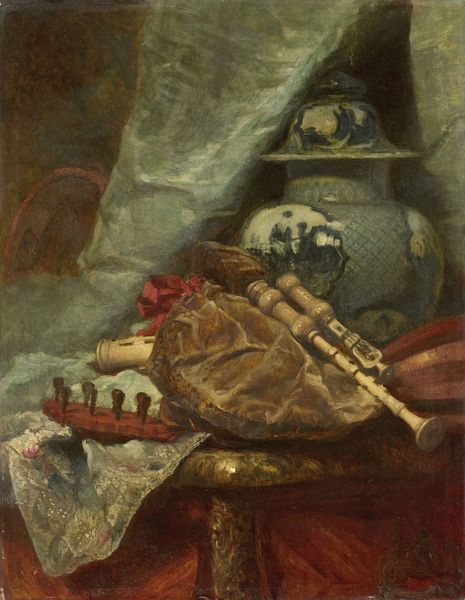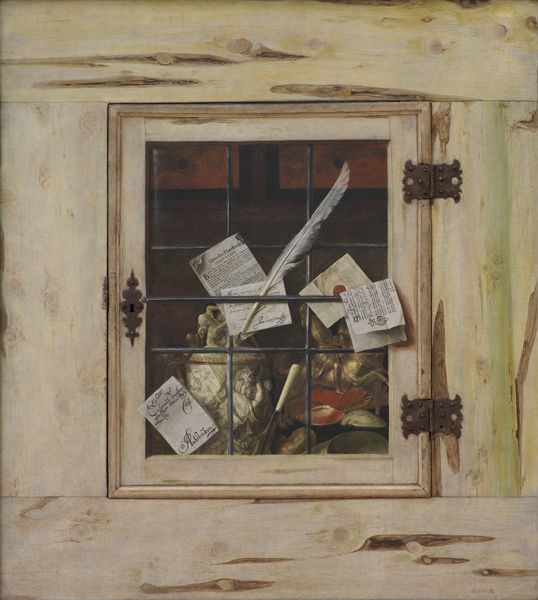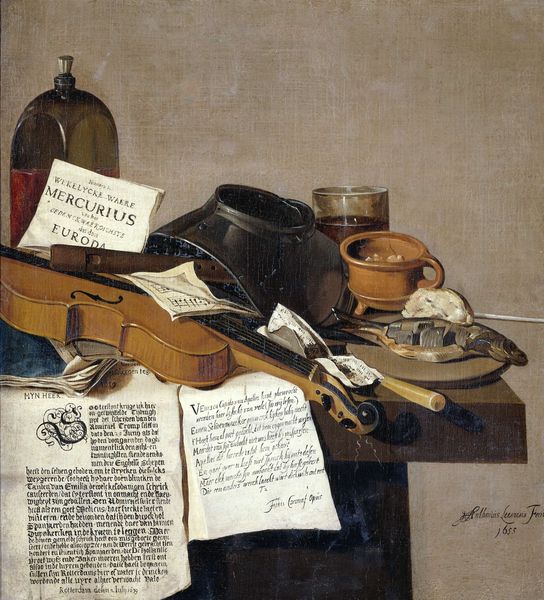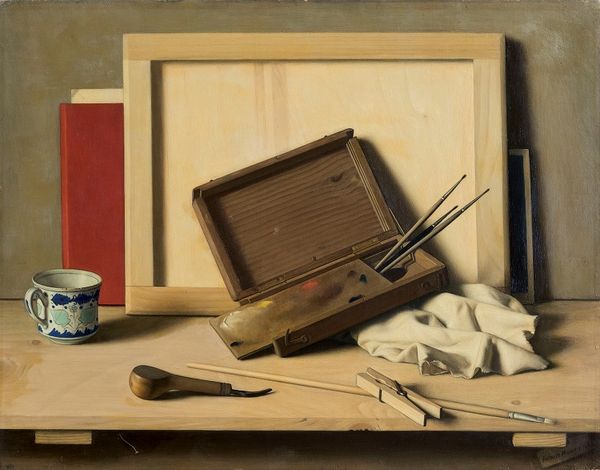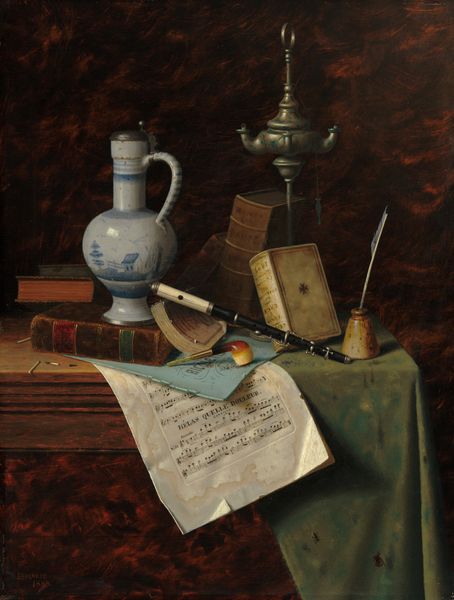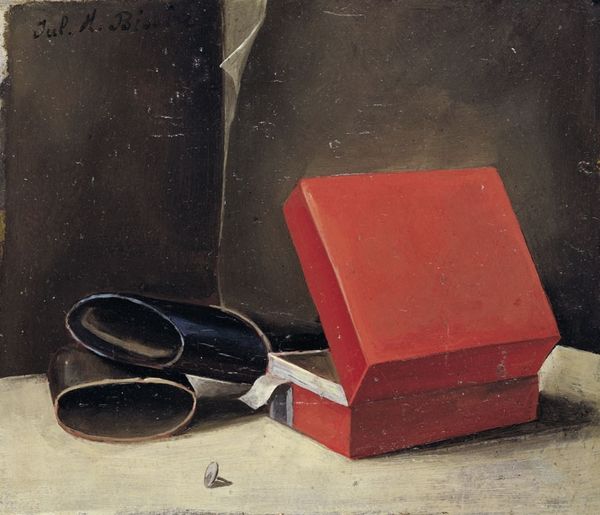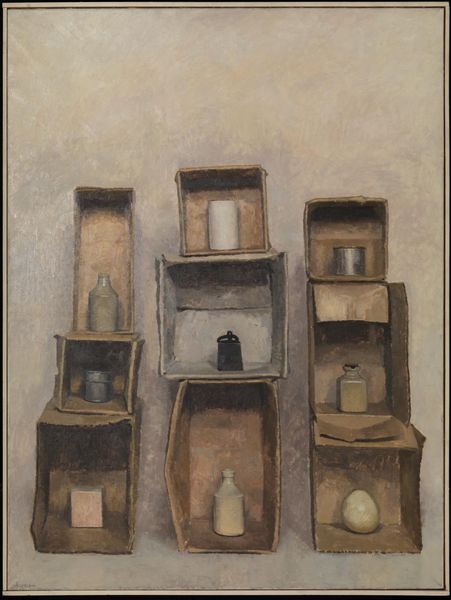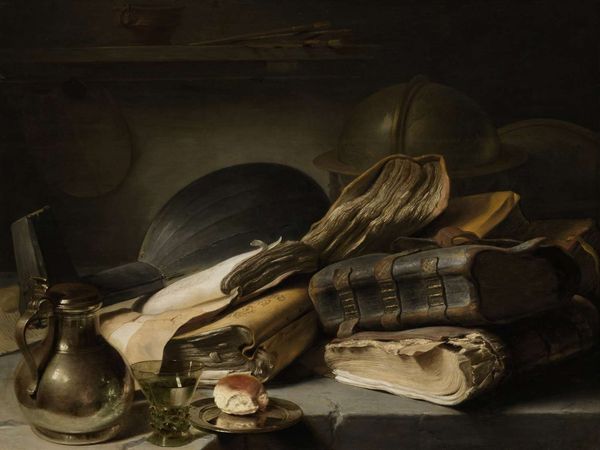
#
possibly oil pastel
#
charcoal art
#
oil painting
#
acrylic on canvas
#
coffee painting
#
underpainting
#
painting painterly
#
animal drawing portrait
#
portrait art
#
watercolor
Dimensions: overall: 75.72 × 70.64 cm (29 13/16 × 27 13/16 in.) framed: 94.62 × 89.85 × 5.72 cm (37 1/4 × 35 3/8 × 2 1/4 in.)
Copyright: National Gallery of Art: CC0 1.0
Charles Bird King made this oil on canvas, Poor Artist's Cupboard, sometime in the first half of the 19th century. It's a still life representing the supposed possessions of a poor artist. But what does it mean to be poor? And how does one signal that status in a painting? Here, King seems to be reflecting on the relationship between material scarcity and intellectual or artistic wealth, a popular theme during the Romantic era. The items in the cupboard—books, papers, a half-eaten loaf of bread—suggest the artist's intellectual pursuits and humble lifestyle. Note the book titled "Advantages of Poverty." Made in the United States, the work can be understood in the context of the country’s burgeoning art scene, where artists often struggled to gain recognition and financial stability. Was this a reflection of King's own experience? As art historians, we can look to letters, exhibition reviews, and other primary sources to understand better the economic realities of artists in the 19th century. By examining the social and institutional context in which art is made, we gain a richer understanding of its meaning and significance.
Comments
No comments
Be the first to comment and join the conversation on the ultimate creative platform.
